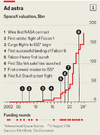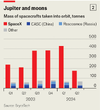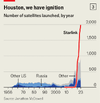- Joined
- 8 June 2008
- Posts
- 13,691
- Reactions
- 20,394
people were already raving against space tourist linking it to CC horror..even if you burn hydrogen, whatever, all this energy is by and large mostly fossil fueled.am not up to date with modern rocket fuels , but CO2 wasn't a by product when a classmate ( at high-school ) was messing with this stuff
( not 100% safe , but no carbon compounds used )






